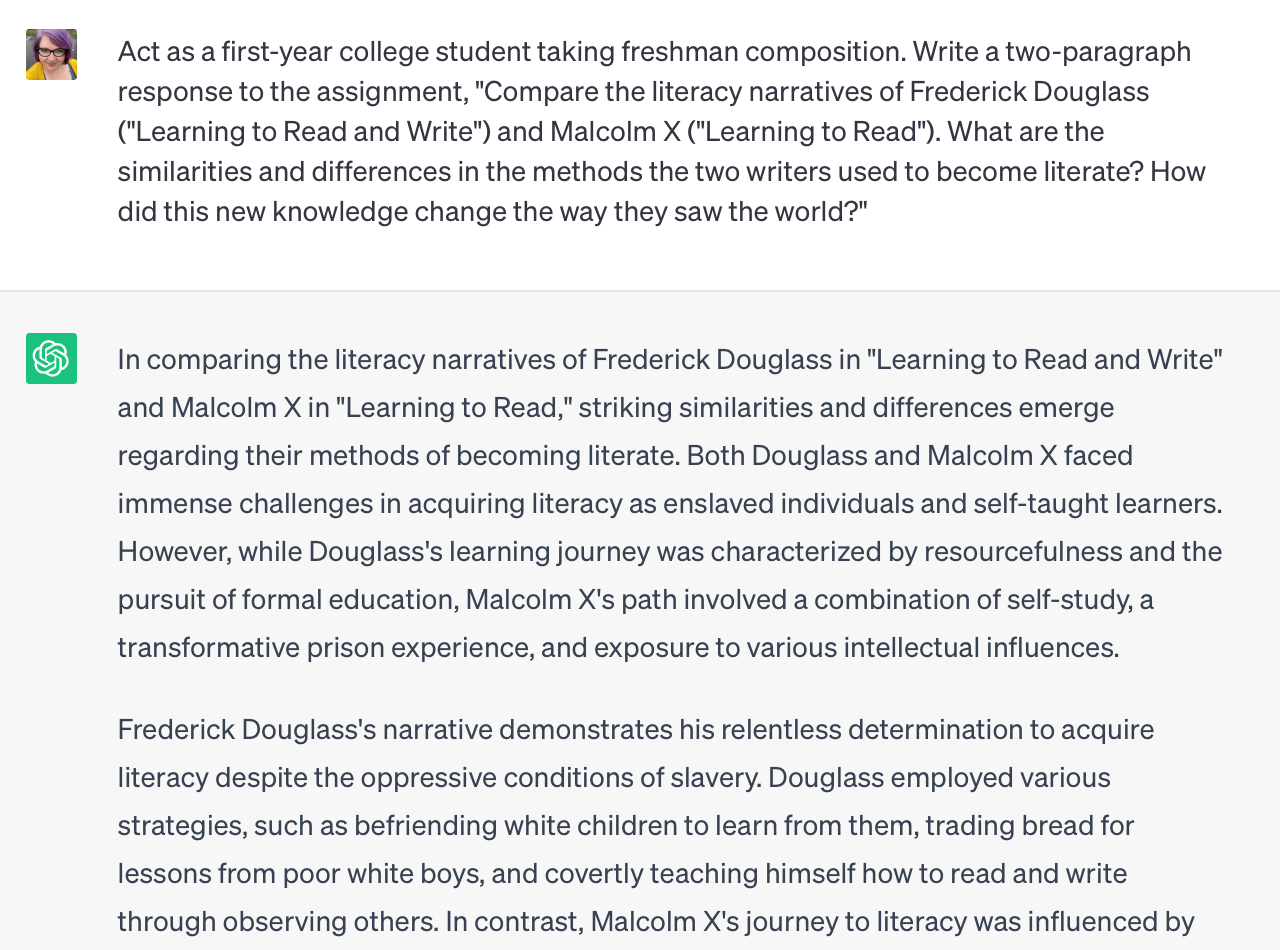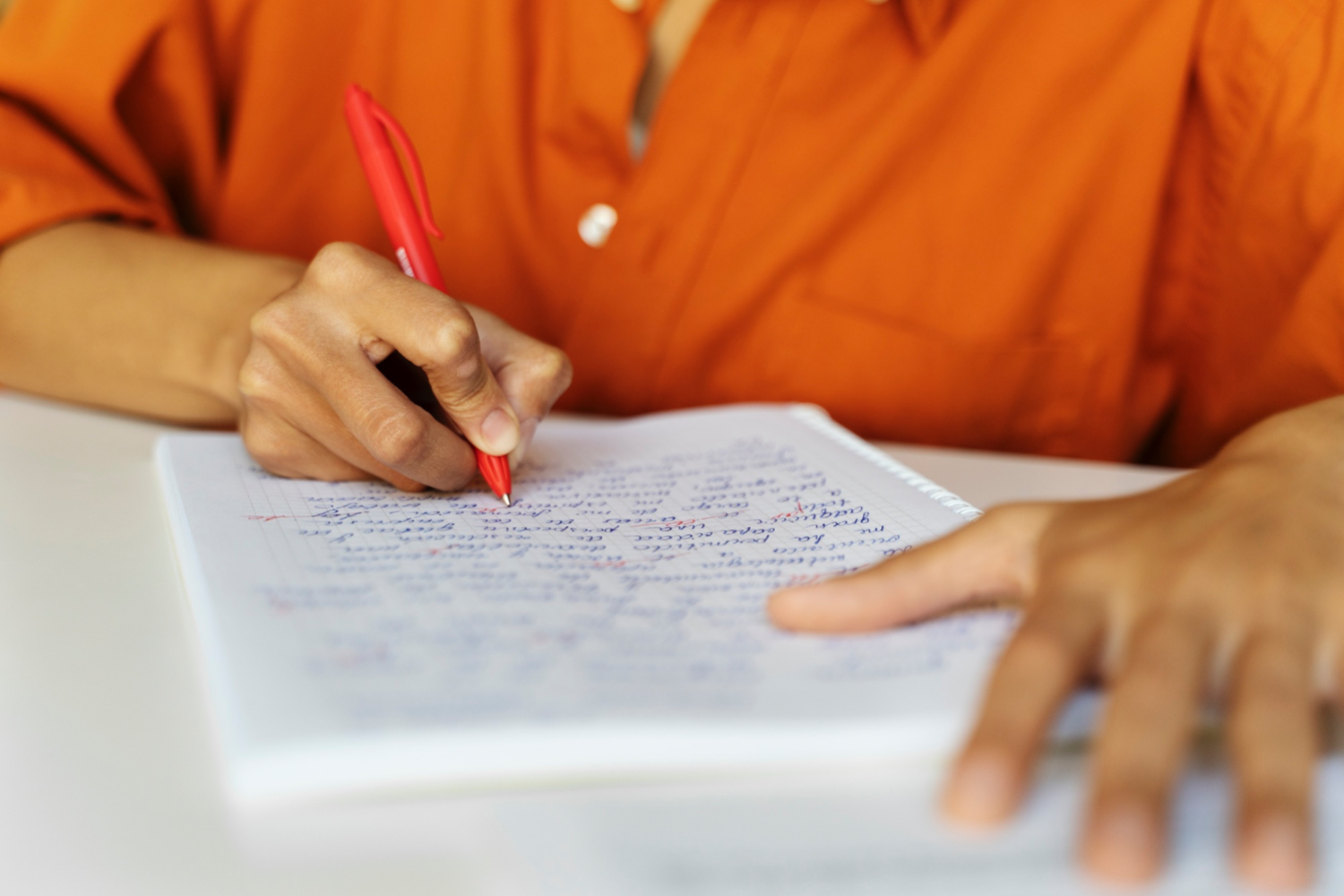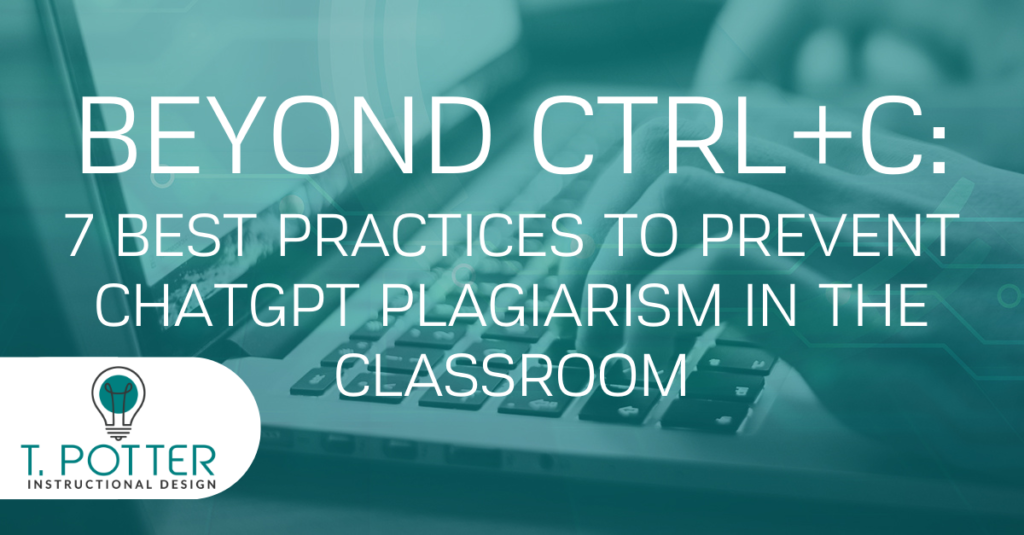
The Escalation of ChatGPT
Even if you thought you had a system that worked, albeit frustrating, enter ChatGPT, a new AI chatbot with incredible potential use. A student can plug in their assignment in any given topic and, in 30 seconds, have a coherent, original piece of academic writing that can’t be detected by matching the text to a source. Suddenly, spotting academic dishonesty is much, much harder. Although ChatGPT’s work still presents several problems, such as providing incorrect information, the primary problem remains that it’s hard to detect ChatGPT plagiarism in academic papers and essay writing, especially in higher education.
What Doesn’t Work?
Caught unprepared, instructors and departments are now scrambling to find ways to spot writing generated with the help of ChatGPT but with limited success. Here are some methods that are proving to be ineffective:1. Plagiarism detection software
Since the release of ChatGPT, software companies like Turnitin have been racing to develop solutions for ChatGPT detectors and other artificial intelligence tools. As of May 2023, Turnitin’s new technology touts a 98% success rate at detecting AI-generated writing, but early results don’t bear this out.
In April 2023, Washington Post technology columnist Geoffrey Fowler tested the new software with the help of five high school students, who created “16 samples of real, AI-fabricated or mixed-source essays to run past Turnitin’s detector”:
The result? It got over half of them at least partly wrong. Turnitin accurately identified six of the 16 — but failed on three […]. And I’d give it only partial credit on the remaining seven, where it was directionally correct but misidentified some portion of ChatGPT-generated or mixed-source writing.
AI detectors look for predictable patterns in writing to evaluate whether it was generated by AI or human writers. Writing that follows predictive patterns is flagged as potentially written by ChatGPT. The underlying problem with this method is that the AI algorithms follow normal human word choices and natural language patterns. Looking for sentences that are constructed in predictable ways isn’t a useful way to identify plagiarism because, well, those predictions are based on how people actually write.
Students may turn in writing that sounds like something ChatGPT would write because ChatGPT is designed to sound like something a student would write. If ChatGPT came up with a sentence, that’s because there’s a good probability that a human would, too.
2. Asking ChatGPT
Some students have reported that professors are running homework assignments and student writing through ChatGPT to ask if AI generated it, with disastrous results for students. This practice demonstrates a fundamental misunderstanding of what ChatGPT does. As a language model, ChatGPT operates like a sophisticated version of the autocomplete suggestions on your phone. It uses probability to predict what word will make the most sense next, the word after that, and the word after that, based on the context supplied by the user. When you ask it to evaluate whether ChatGPT wrote a paper, it’s not evaluating the writing; it’s telling you what you expect it to, probabilistically.Quitting the Plagiarism Police Force
Playing plagiarism cop in the age of ChatGPT is an exercise in frustration. Instead of constantly reacting to suspected plagiarism, we need to return to classroom best practices to proactively prevent students from using ChatGPT or any other plagiarism techniques when writing essays and other projects.What Works Better
Here are 7 best practices to integrate into your classroom to deter and prevent plagiarism before the student can copy from ChatGPT:1. Discuss academic integrity early and in-depth.
The best way to prevent the use of AI tools is to make time early in the semester to ensure that students not only understand what plagiarism is but also have the tools to avoid it. Brown and Janssen (2017) designed a plagiarism prevention framework that makes students aware of what, exactly, constitutes academic dishonesty, provides them with strategies for avoiding plagiarism, and ends with learners creating and agreeing to their own honor code. Their framework consists of these steps2 :-
“What is plagiarism?” – A sorting activity in which students must identify different types of plagiarism, with the goal “to raise awareness that all kinds of plagiarism are inappropriate and will be followed up.”
-
“What is the impact of plagiarism?” – A look at your institution’s academic dishonesty policy, followed by real-life examples of academic dishonesty in their institution or program and the consequences thereof.
-
“How can I prevent plagiarism?” – An in-class assignment for students to paraphrase a source and then to practice synthesizing original sources with their own ideas, followed by a student-led discussion of the processes they arrived at for doing so.
-
Integrity codes – A workshop activity that “tasks the students with the formulation of a pledge based around reasons for not plagiarising. [This] is much more meaningful than signing ‘I have not plagiarised’” on a cover letter.
-
“What do I do now?” – A brief summary worksheet in which students must identify whether statements about plagiarism are true or false. Students complete the activity on their own, then discuss their responses with a partner, and finally participate in a whole-class discussion. This helps students to synthesize the information and reflect on what they have learned.2

2. Write in the classroom.
Make opportunities for students to write in class – everything from reading responses, process explanations, peer feedback, and full essays. This allows you to coach learners in real-time as they write, helps them build confidence in writing without turning to the internet for ideas, promotes understanding and analysis of new ideas, and ensures that they produce their own work. Be mindful, however, of making in-class writing feel like a punishment. Your goal should be to make the best of technology and analog modalities, not to eliminate all technology because one tool can potentially be used to cheat. Think of writing in class as an opportunity to emphasize what works best in class, not a last resort. And remember to create accommodations for learners who are neurodiverse or have learning disabilities that may make in-class writing more stressful than beneficial. 3. Take a baseline writing sample. The first week of the semester, assign students to write a short essay about a topic that’s easy for them to form an opinion about, for example, asynchronous online vs. in-person classes or – hey, why not – student use of ChatGPT. Use this as a low-stakes opportunity to practice the writing process, work in groups to brainstorm and outline, and have students write their drafts in the classroom. It gives you an idea of what areas to target during the semester. But be direct with students about its other purpose: This writing sample gives you something to compare their future work to. Now you know what they sound like.
4. Focus on scaffolding and process-based assignments.
One-and-done writing assignments, in which the student is given an assignment sheet and returns a finished product, are fertile ground for plagiarism. Often, this is because learners don’t understand the process they must follow to create a polished piece of writing. This is especially true in the writing classroom; many students don’t come in knowing how to break down a writing project into discrete steps. Continually working through the writing process (I use the “[artist], architect, carpenter, judge” paradigm of poet and educator Betty Flowers) in the classroom teaches students to approach an assignment as a series of concrete, distinct tasks, rather than one overwhelming generative act. This process-based approach can look like working through the artist step together, as students are guided in generating ideas or conducting research; working out how to structure their ideas as the architect; identifying genre conventions to follow in putting together those ideas in a draft in the carpenter role; and as judge, evaluating their own and other learners’ drafts through peer workshops and conferences. These steps teach students how to approach writing and build confidence and problem-solving skills, making them less likely to turn to the internet for ideas. This also gives the instructor visibility into their writing as it is created, allowing you to intervene and coach when needed, but also showing you that students are doing their own work. (The drawback here, of course, is that all of this takes time. It may mean more time spent grading work, holding conferences, coaching students – and time is hard to come by, particularly for contract and adjunct instructors. ChatGPT can be useful here in helping you buy back some time; see for example Bonnie Nieves’s demonstration of using ChatGPT to aid classroom planning by creating course overviews, lesson plans, and assignments, and even generating discussion prompts.)5. Ask questions.
Use in-person conferences, exit slips, or in-class writing to ask students how they wrote their assignments – the process they took to arrive at their position, develop their thesis, gather evidence, and evaluate and revise their work. This serves multiple purposes: It prompts learners to reflect on their writing process and identify what worked, reinforcing those steps; it gives you insight into how well they understand and can apply concepts; and it can reveal evasive, unspecific, or non sequitur responses that could indicate that a student didn’t do their own work. Sample questions: Why did you choose this topic? Who was your intended audience, and how did you write with this in mind? What did you like about this assignment? What was the hardest part? How did you demonstrate [this classroom concept] in your writing?6. Retool your writing assignments.
Create assignments that AI can’t respond to. Include discussions from class, for example. Have students write in groups, with responses that build off each other’s work. Write about very recent events or issues that are specific to your campus or community. Require that students integrate an example from their own experience as evidence for their claim. Run your prompts through ChatGPT to test whether the AI can generate a quality response.7. Consider the objectives.
Take a step back and consider what the original intent of your learning activity was in the first place. If you were asking engineering students to write an essay, it’s likely that your intent was to explore their engineering knowledge, not their essay-writing ability. Would some other form of assignment or activity better assess their learning or give them an opportunity to demonstrate their skills? How could you redesign the opportunity to be something that is more in line with the skill or knowledge you are asking students to demonstrate? ChatGPT can’t build a physical model of a bridge or give a presentation about physics. Concerns about students using ChatGPT to cheat are understandable. Students know that it’s a powerful, easily accessible, and nearly undetectable tool; the allure is strong. They also know we can no longer Ctrl+C sections of their papers to check whether it’s their original work. Educators are at a crossroads: either we continue dedicating our energy toward catching plagiarism, or we get out ahead of it. This will involve rethinking our classroom practices and creating new assignments and activities that preempt opportunities for plagiarizing. In doing so, we can rededicate ourselves to a collaborative, not adversarial, relationship with our students. It’s time we hand in our plagiarism police badge.Abi Bechtel is a writer, educator, and ChatGPT enthusiast. They have an MFA in Creative Writing from the Northeast Ohio MFA program through the University of Akron, and they just think generative AI is neat.
- Scheg, A. G. (2013). The Impact of Turnitin to the Student-Teacher Relationship. Journal of Interdisciplinary Studies in Education, 2(1), 29–38.
- Brown, N., & Janssen, R. (2017). Preventing Plagiarism and Fostering Academic Integrity: A Practical Approach. Journal of Perspectives in Applied Academic Practice, 5(3), 102–109. https://doi-org.ezproxy.uakron.edu:2443/10.14297/jpaap.v5i3.245


